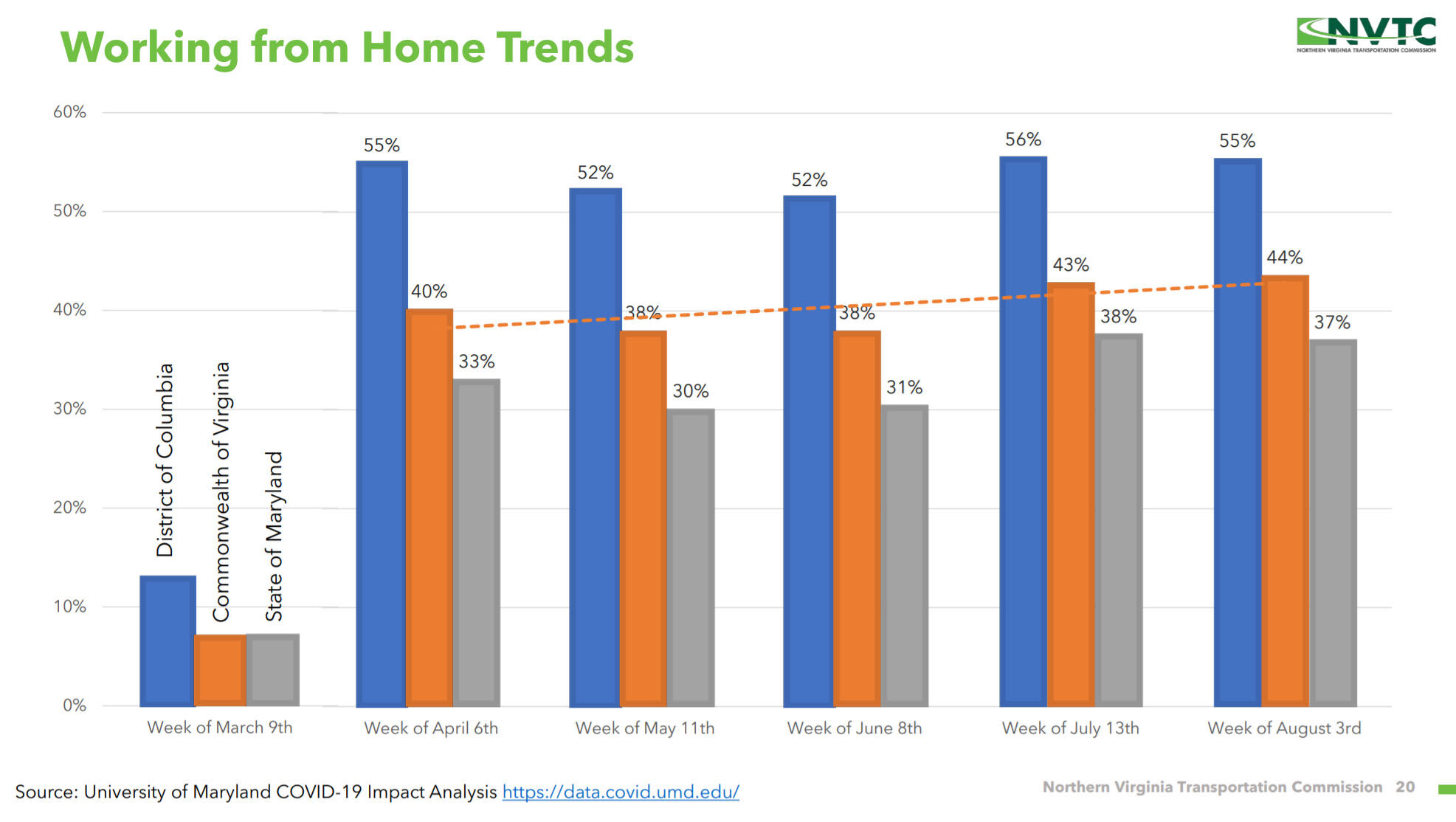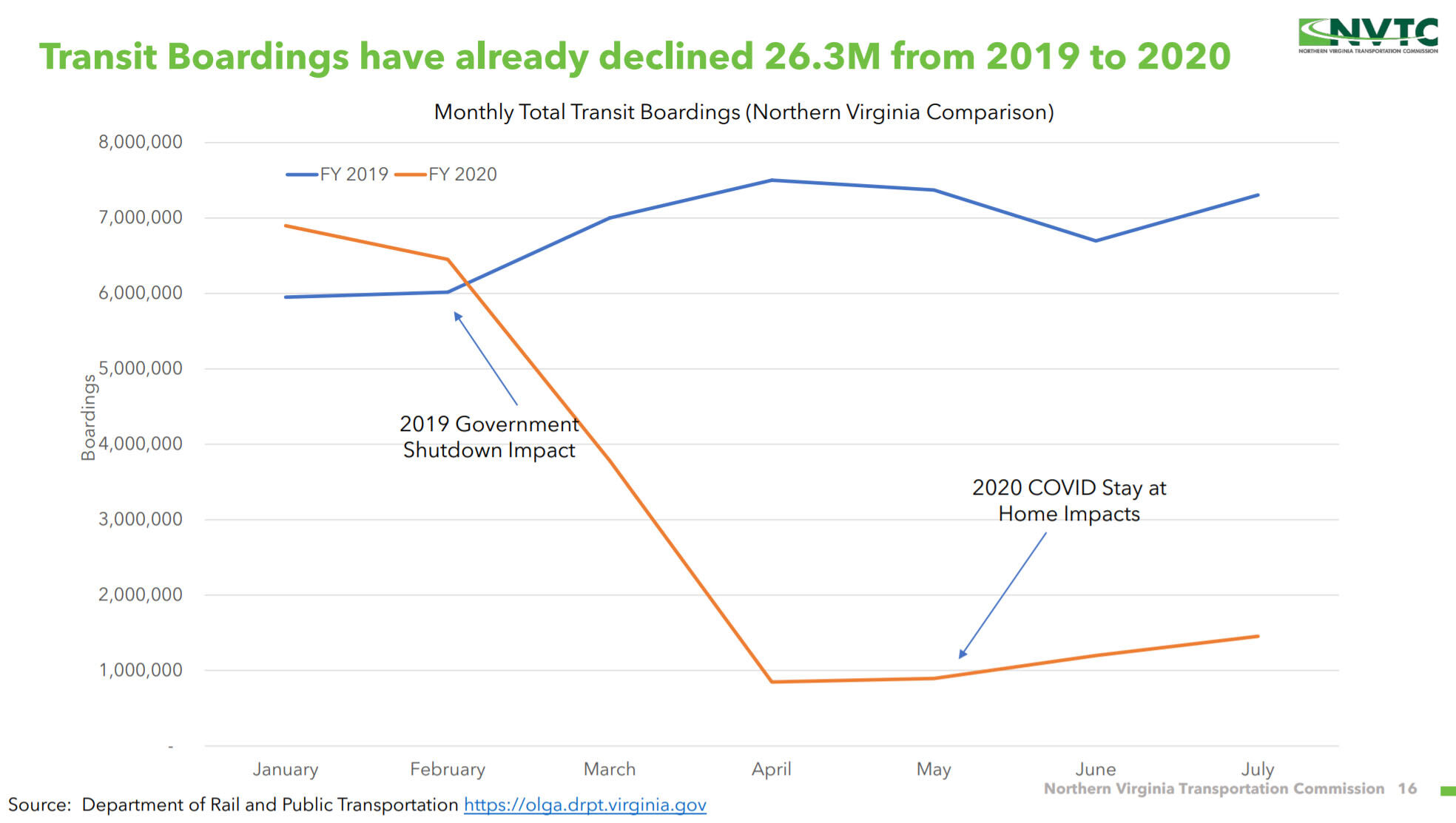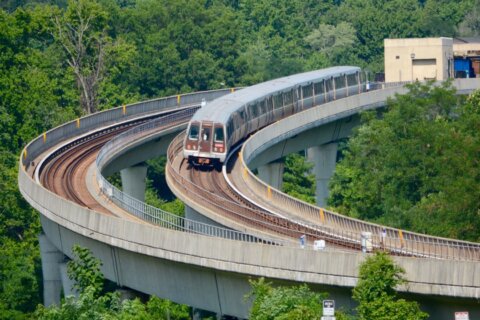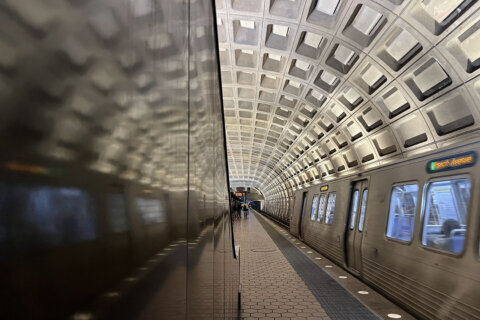With an emergency boost of federal funding set to run out by the end of the year, the D.C. Metro system, which is reportedly losing millions of dollars a day, is beginning to plan for significant cost-saving measures, including the cutting of rail and bus service next year.
Metro General Manager Paul Wiedefeld, has warned for months that the agency faces a “looming crisis” without more federal funding.
But a Metro Board of Directors meeting Thursday morning will provide the first glimpse into possible service cuts, when board members discuss setting the schedule — or docket — for a series of public hearings on service reductions, according to Metro Board member Matt Letorneau, of Loudoun County, Virginia. He previewed the Metro meeting during a Sept. 3 presentation before the Northern Virginia Transportation Commission.
Letorneau, who is one of eight members on the Metro board, said he anticipates “difficult discussions” ahead.
“We’re at a point where unless new federal money comes to the table, there’s no way to avoid significant pain,” he said.
The Metro Board meeting on possible service reductions comes just three weeks after the transit agency restored service on the rails to near pre-pandemic levels, thanks to $876 million in federal money through the massive coronavirus relief bill known as the CARES Act.
However, talks on Capitol Hill about a further round of coronavirus relief funding — which Metro officials say is necessary — appear to have come to a standstill.
Without additional money from the feds, Metro needs to make significant changes, Letorneau said.
“Essentially, without changes or more federal money, WMATA will have difficulty continuing to run the system, make payroll and do all those sorts of things,” Letorneau said. “And so the Metro Board is now in the midst of working through some significant changes to save costs.”
Maryland, D.C. and Virginia all provide additional dedicated funding to the system, but each jurisdiction is now grappling with the possibility of their own budget shortfalls due to the coronavirus pandemic’s economic impact.
“There’s an understanding in the Metro Board that more money is not necessarily coming from the jurisdictions in fiscal year 2021 in order to address this,” Letorneau said. “And so that means that the only way to really rectify this issue is going to be reduce service and reduce costs.”
None of the changes Metro officials are contemplating would necessarily take effect immediately. There is an extensive public comment period before Metro can enact service reductions or change schedules.
“But this is the path that we need to be on to get to these changes by the end of the year,” Letorneau added.
In addition, he said, there are ongoing discussions with the union that represents Metro employees.
“I think it’s fair to say that those discussions between the Metro GM and the union president have been productive, and, at this point in time, there’s a mutual understanding of the situation,” he said.
In the meantime, Metro officials are continuing to push for further federal relief, Letorneau said. “The federal government may change gears — and we hope they do at some point,” he said, adding that planning would remain flexible in case a deal on additional coronavirus relief is ultimately struck.
“If we have a different financial situation at some point during that process — say, after the election — then Metro would have the ability to adjust,” he said.
Riders haven’t returned
The massive tranche of federal money through the CARES Act was a lifeline for Metro, allowing the agency to press many employees, who had been idle, back into service, Letorneau said.
But even with service restored to near pre-pandemic levels, Metro hasn’t seen an influx of riders returning to the system.
Letorneau said the system has seen only a “small incremental increase” since mid-August when Metro returned to a near-normal schedule. “It is not much of a recovery,” he added.
Officials with the transit agency expected to see more riders return when federal employees, started returning to their offices, Letorneau said.
“Quite frankly, the big ticket for our Metro system is the federal government … And I think it’s fair to say we that we were expecting more ridership to return when the federal government started recalling employees than has been the case,” he said.
There’s even potentially worse news on Metrobus, where ridership had been holding mostly steady for the past several months.
Metro boosted bus service starting Aug. 23.
Now, however, the transit agency is now seeing some “softening” in bus ridership numbers, Letorneau said.
“Unfortunately, the working theory on that is some of the folks who were relying on (Metrobus) may have actually lost their jobs, and with that reduced employment now, we’re actually seeing some softening on certain routes on the bus system,” he said.
Even with the boost in bus service, Metrobus riders are continuing to board from the rear of the bus and getting a pass on paying the $2 fare.
Sharing what he called his personal opinion, Letourneau said he would like to see bus riders paying fares “as soon as possible — not only for revenue reasons but also because I think it sends a message to the public that it is safe to ride the bus; it’s safe to ride transit.”
‘Rider confidence is a big issue’
At the same time officials are planning for the worst-case scenario, they’re also trying to lure back riders who have ghosted the system amid questions about the safety of public transit when it comes to the spread of the coronavirus.
“A lot of people are just afraid to use public transportation where there’s a lot of people, and I think that’s going to be one of our hurdles,” said Virginia State Sen. John Bell, who also sits on the transportation commission.
Letorneau conceded that “rider confidence is a big issue,” but pointed to the findings of recent surveys indicating that there is little evidence that public transit poses a significant risk of seeding COVID-19 outbreaks.
He said Metro is planning a public awareness campaign this fall to try to reassure riders and highlight precautions Metro is taking, including stepped-up cleaning.
A snapshot of just how severely the coronavirus pandemic hit public transportation in the D.C. suburbs was also discussed by the Northern Virginia Transportation Commission at its Sept. 3 meeting.

At the pandemic’s lowest point in April, Metro ridership in Northern Virginia plunged by more than 95% compared to last year, according to the commission’s State of Public Transportation in Northern Virginia report.
In July, Metro ridership was still down by about 90%, according to the report, which is based on data from the Virginia Department of Rail and Public Transportation.
Things were slightly better on Metrobus in the Northern Virginia suburbs, which fell by more than 80% in April and remained down by about 70% in July.
At the same time public transportation use fell, telework skyrocketed.

Overall, between 35% and 50% of residents across D.C., Maryland and Virginia have been consistently working from home over the past several months, compared to about 10% before the pandemic, according to the report, which was based on data collected by the University of Maryland.
- Sign up for WTOP alerts
- Latest coronavirus test results in DC, Maryland and Virginia
- Coronavirus FAQ: What you need to know
- Coronavirus resources: Get and give help in DC, Maryland and Virginia
- Fall school plans for DC, Maryland, Virginia systems during coronavirus
- So far, so good: 3 weeks in, no COVID-19 cases at Virginia’s Randolph-Macon Academy
- U.Md. reverses course, says bus drivers can enforce mask usage
- As virtual semester begins, Anne Arundel Co. envisions building, renovating schools
Looking for more information? D.C., Maryland and Virginia are each releasing more data every day. Visit their official sites here: Virginia | Maryland | D.C.







